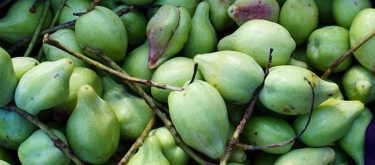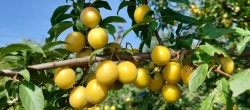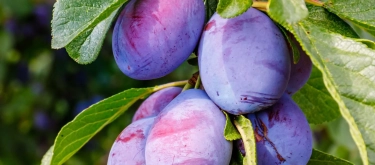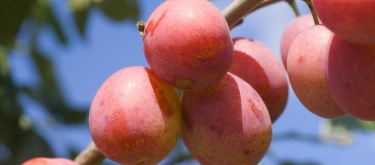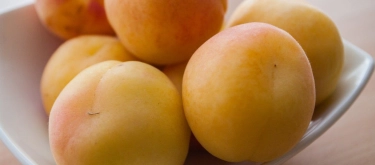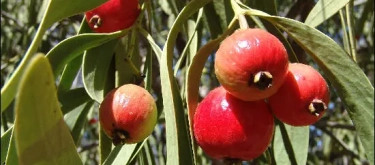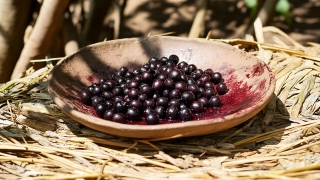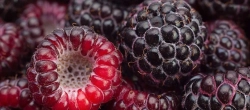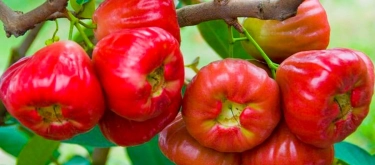Davidson's Plum: Taste Profile, Aroma, Benefits and Health Risks
Davidson's Plum (Davidsonia pruriens and Davidsonia jerseyana) is a unique Australian native fruit, prominently found in the subtropical rainforests of New South Wales and Queensland. Revered for its striking deep purple color and intense flavor, Davidson's plum is increasingly celebrated in gourmet circles, both locally and internationally.
Davidson's plum is generally safe for consumption, but individuals sensitive to plums or related stone fruits may experience allergic reactions.
What does Davidson's Plum taste like?
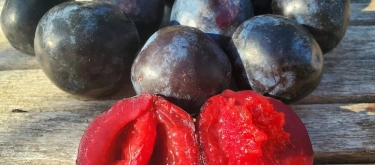
Complete Sensory Description:
-
Taste: Davidson's plum offers an intensely tart, vibrant acidity balanced by subtle earthy undertones and a hint of sweetness. Its taste profile is refreshingly bold, distinctly sharp, and somewhat sour.
-
Aroma: The fruit boasts a fresh, tangy aroma with delicate notes reminiscent of wild berries and plums, accented by earthy and slightly floral undertones.
-
Texture: The flesh is juicy and dense with a slightly fibrous consistency surrounding a central stone, typical of stone fruits.
-
Appearance: The fruit is medium-sized, round or slightly oval, with a smooth, thin skin exhibiting a deep, vivid purple to almost black hue, while the flesh inside ranges from deep red to intense burgundy.
In-depth Flavor Analysis:
The pronounced tartness of Davidson's plum is attributed primarily to its exceptionally high malic and citric acid content. The sweetness, though subtle, results from naturally occurring sugars like fructose. Anthocyanins, responsible for the fruit’s deep color, also provide mild earthy and berry-like notes. Its unique flavor complexity evolves significantly depending on the ripeness and method of culinary preparation, becoming less acidic and more rounded when cooked or sweetened.
Flavour Variations Depending on Preparation and Ripeness:
-
Ripeness: Unripe Davidson's plums are markedly sour, with intense acidity and minimal sweetness. Fully ripe fruits maintain their acidity but develop a slightly more pronounced natural sweetness, offering more balanced and enjoyable flavor notes.
-
Preparation: Cooking or sweetening Davidson's plum (e.g., in jams, jellies, or sauces) significantly reduces tartness and enhances fruitiness. Drying intensifies the sweet and tart flavors, providing a concentrated, robust taste ideal for gourmet cooking.
Varieties and Culinary Applications:
Two primary species, Davidsonia pruriens and Davidsonia jerseyana, offer similar flavor profiles but differ slightly in size and sweetness. Davidson's plum is widely used in Australian cuisine for jams, preserves, sauces, desserts, ice creams, sorbets, and beverages. Its bold flavor profile pairs exceptionally well with desserts, cheeses, game meats, and in modern fusion cuisine.
Selection and Storage:
Choose plums that are firm, glossy, and uniformly deep-colored without blemishes or bruising. Fresh Davidson’s plums should be refrigerated and consumed within a week. For longer storage, fruits can be frozen whole or processed immediately into preserves or sauces.
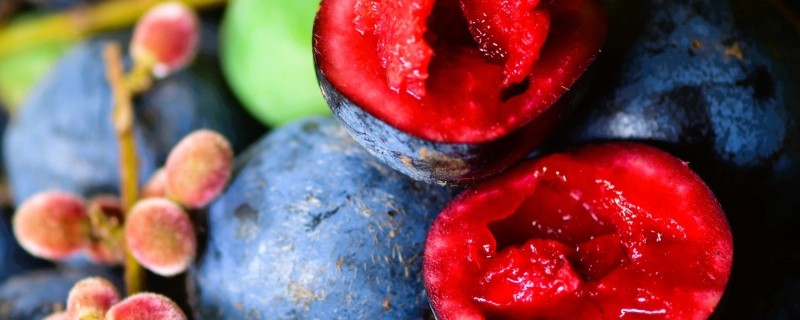
Nutritional Insights:
Davidson’s plum is nutritionally dense, exceptionally high in antioxidants, vitamin C, vitamin E, potassium, lutein, folate, and anthocyanins. Its potent antioxidant content supports immune function, promotes cardiovascular health, reduces inflammation, and may improve skin health.
Expert Insights & Culinary Tips:
Chefs recommend balancing Davidson’s plum’s robust acidity with sweetness or creaminess in dishes. Pairing the fruit with dairy-based desserts, such as cheesecake or ice cream, or combining it with sweeter fruits like apples and pears, accentuates its unique flavors while softening its tartness. Incorporating spices like cinnamon, vanilla, or ginger can complement and enhance its complexity.
Interesting and Curious Facts:
-
Davidson's plum was traditionally harvested and consumed by Indigenous Australians, who valued it both as a food source and for medicinal purposes.
-
Increasingly featured in contemporary Australian cuisine, the fruit symbolizes a revival of interest in native ingredients.
-
Due to its unique taste and vibrant color, Davidson's plum is gaining global culinary attention, particularly in high-end restaurants and gourmet products.
Harm and Dietary Considerations:
Excessive intake might cause digestive discomfort due to its high acidity. Individuals allergic to stone fruits or sensitive to highly acidic foods should consume Davidson’s plum moderately. It is advisable for pregnant women and individuals with gastrointestinal issues to monitor their consumption carefully.
Religious Dietary Considerations:
Davidson’s plum is universally acceptable in all major religious dietary contexts, with no known dietary restrictions.
Final Thoughts & Sensory Journey:
Davidson’s plum offers a remarkable sensory journey characterized by its striking color, intense tartness, and subtle sweetness. Its culinary versatility, nutritional excellence, and unique flavor profile underscore its rising popularity and recognition as an outstanding native Australian fruit.
Resources:
-
"Australian Native Food Plants: Propagation and Cultivation" by Yasmina Sultanbawa and Fazal Sultanbawa (2016).
-
"Native Foods: Plants for Australian Gardens" by Angus Stewart and A.B. Bishop (2015).
-
"Bushfood: A Culinary Journey Through Australian Native Foods" by Jennifer Isaacs (2017).
